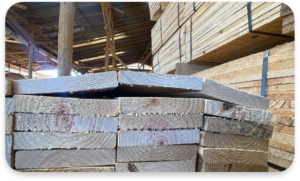案件化調査結果 3-1 〜 Result from SDGs Business Model Formulation Survey 3-1〜

Question. This is the scenery in a Tanzanian rural village. Which option describes the Tanzanian population engaged in agriculture most closely?
A. 30% / A. 30% of the population
B. 50% / A. 50 % of the population
C. 70% / C. 70% of the population)
案件化調査結果 3-1
今日も案件化調査の結果をお伝えしたかったのですが、まだ最終結果とまでは行っていないので途中経過をお伝えします。
今日お伝えするのは、農作物の収率試験について。農園に巣箱を設置すると、農作物の収穫量が増えるということを以前にお伝えしました。(詳しくはこちらから) タンザニアには、広大な農場が広がっているにも関わらず、農場に巣箱が設置されていない為、十分に農作物を収穫できていない+十分にはちみつを収穫できていない可能性があります。もしそうであれば、養蜂的には、蜜源を活用しきれていないモッタイナイ現状です。
「農園に巣箱を置けばいいだけなのか?簡単じゃないか?」と思われるかもしれませんが、実はそうでもありません。異国の人間がやって来て、「あなたの農園の収穫量を増やしてあげるから養蜂の巣箱を置かせて欲しい」と言っても、不信感しか抱きませんよね…。本プロジェクトのチーフによると、アジアのある国で同様の依頼をしたところ、みつばちが花蜜を盗んで農作物の収率が下がるのではないかと、現地の農家さんに心配され、なかなか受け入れてもらえなかったとか。納得して置かせてもらうためには、説明する資料等が必須です。そこで大学など研究機関と協力して巣箱を設置した場合と、しなかった場合では、農作物の収穫量にどれぐらいの差が生じるのかを調べる試験を行っています。

右:試験場で開花したひまわり)
農場では無事収穫を終え、現在収穫量を計測しています。農家さんが巣箱を設置したいと思うようなデータが、結果として取得できることを期待しています!また結果がわかったら皆さんにも報告しようと思います。
さて、冒頭クイズの正解は、”C. 70% ” 。タンザニアの農業人口を表すデータは様々ありますが、概ね人口の65〜75%が農業に従事しているそうです。タンザニアの農園に養蜂の巣箱が大々的に導入され、農作物やはちみつの収穫量が格段に増えたら、タンザニア社会全体に与える経済効果も大きそうですね。
Email: gifutoshop@nisshin-honey.co.jp
もしくはこちらから>>> https://nisshin-honey.co.jp/mail/
Result from SDGs Business Model Formulation Survey 3-1
I wish I could tell you a part of the results from our survey today as well. Yet, we are on the way, and I am going to tell you how we are coming so far in stead.
Today’s topic is about research on harvest of produce. As mentioned before, there is an increase of harvest of produce by installing hives at farmland. (Click here for more details) However, that does not happen in Tanzania. Although there is large scale of farmland in Tanzania, they do not install hives. As a result, there might be possibility that they do not utilize flower nectar fully. If not fully utilized, that is, in a word, MOTTAINAI, loss of those time, flower nectar, labour force, e.t.c., with which more produce and honey could have been harvested.
You would assume that it would be easy just to install hives at farmland. Actually, it is not. Now I would like you to imagine that one day a foreigner comes and says, ” Hi, I will have your harvest increased, if you allow me to install some beehives at your land.” How would you feel? Perhaps, you could not help doubting what he was saying. For instance, the chief of this project once had the same experience in certain Asian country. When he asked, local farmers were afraid that bees would steal nectar, which would cause the lower number of harvest of produce, and not allowed him to install hives. I heard it was difficult to find out farmers who were willing to cooperate. This experience has told us that trustable date are required to have local people understood and collaborated. This is how we are collaborating with research institutions to see difference on the amount of production between absence and presence of hives at farmland.

Right: Sunflower at the Site)
Finally we have got harvest at the sites and, now we are calculating the amount of harvest. I wish we will see result that makes local farmers want to have beehive at their farmland! I will share that with you as soon as we have got.
So, the answer for the question is “C. 70% of the population.” There is a range of data to describe the ratio available. It seems that approximately 65 to 75 % of population is engaged in agriculture sector. That is, if beehives are installed at farmland massively, which successfully increases scale of harvest of produce and honey significantly, it is likely that it has a huge impact on Tanzanian economics. Thank you for reading today, bye for now. See you soon!
Contact
Email us at gifutoshop@nisshin-honey.co.jp

